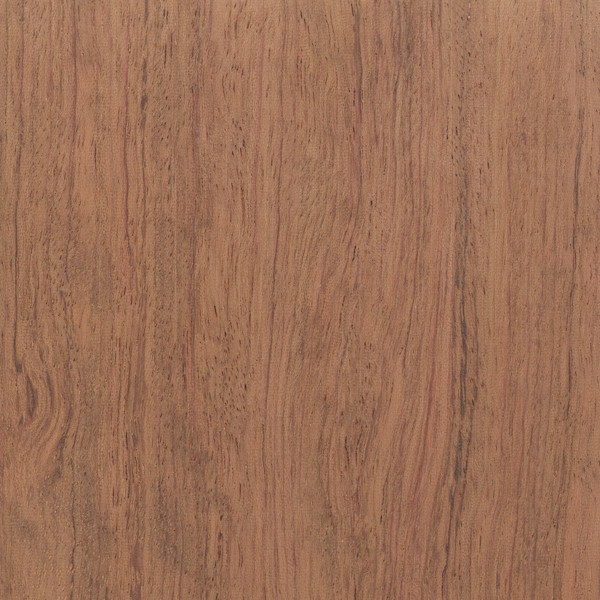Bubinga
Color/Appearance: Heartwood ranges from a pinkish red to a darker reddish brown with darker purple or black streaks. Sapwood is a pale straw color and is clearly demarcated from the heartwood. Bubinga is very frequently seen with a variety of figure, including: pommele, flamed, waterfall, quilted, mottled, etc.
Grain/Texture: Grain is straight to interlocked. Has a uniform fine to medium texture and moderate natural luster.
Endgrain: Diffuse-porous; medium pores in no specific arrangement; solitary and radial multiples of 2-3; mineral deposits occasionally present; growth rings distinct due to marginal parenchyma; rays faintly visible without lens; parenchyma vasicentric, aliform, confluent, and banded (marginal).
Rot Resistance: Ranges from moderately durable to very durable depending upon the the species. Bubinga is also reported to be resistant to termite and marine borer attack.
Workability: Easy to work overall, though depending upon the species Bubinga can have silica present, which can prematurely dull cutting edges. Also, on pieces with figured or interlocking grain, tearout can occur during planing or other machining operations. Gluing can occasionally be problematic due to Bubinga’s high density and natural oils. Turns and finishes well.
Odor: Bubinga is reported to have an unpleasant scent when the lumber is still wet, which disappears after the wood is dry.
Sustainability: This wood species is not listed in the CITES Appendices or on the IUCN Red List of Threatened Species.
Common Uses: Veneer, inlays, fine furniture, cabinetry, turnings, and other specialty items. Since Bubinga trees can grow so large, natural-edge slabs of the wood have also been used in tabletops and other specialized projects.
Comments: An immensely popular imported African hardwood, Bubinga may be loved as much for its quirky name as it is for its strength and beauty. Also sometimes called Kevazingo, usually in reference to its decorative rotary-cut veneer.
Bubinga has a close resemblance to rosewood, and is often use in place of more expensive woods. Yet Bubinga also features a host of stunning grain figures, such as flamed, pommele, and waterfall, which make this wood truly unique. Bubinga also has an exceptional strength-to-weight ratio.



